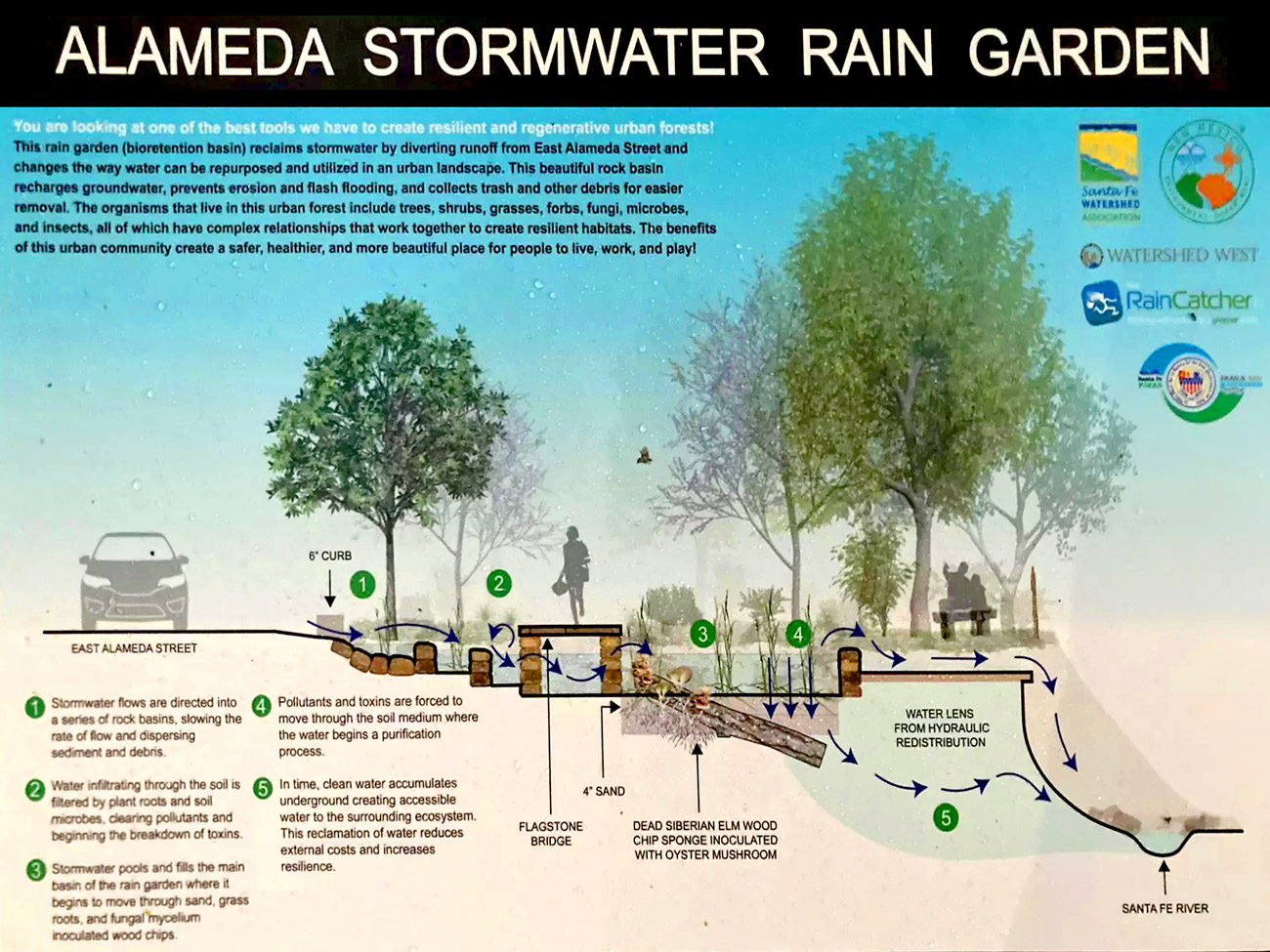In July of 2022, The RainCatcher and the City of Santa Fe, along with other partners, unveiled the newest of seven “Rain Gardens” on East Alameda Street.
A combination of form and function, these new Rain Gardens are designed to be natural park-like areas for the public, yet also serve an important purpose: to filter and cleanse rainwater before it flows into the soil and the Santa Fe River.
Using mushrooms, native grasses and other organic materials to filter the rainwater, and a series of rock basins to slow down the stormwater to prevent erosion, Santa Fe’s rains are channeled through the Rain Garden’s biofiltration system. There, the stormwater’s debris and pollutants are captured, separated and filtered, and the cleansed rainwater eventually exits the system, flowing into the Santa Fe River and soaking into the soil and low-lying aquifers, becoming available for the trees and plants in the surrounding ecosystem.
Designed and built by The RainCatcher in collaboration with the City of Santa Fe’s Public Works Department, the Santa Fe Watershed Association, Watershed West and the New Mexico Environment Department, Rain Gardens like these have the potential to transform urban storm runoff into cleaner water before it enters the ecosystem.
“It’s exciting to see the City of Santa Fe embrace these types of projects, not only to protect our water system and beautify our park areas, but also for our children’s futures,” said Reese Baker, owner of the The RainCatcher. “With these Rain Gardens, instead of fast-moving stormwater filled with debris and garbage flowing directly into the streets and the river, it’s slowed and cleansed naturally, through this series of basins and biofiltration systems. We have less soil erosion happening, less pollutants and garbage going into the streets and river, and more clean water as an end product. It’s a big win all around,” he added.
The sign at the site illustrates how the process works:

The sign reads:
This rain garden (bioretention basin) reclaims stormwater by diverting runoff from East Alameda Street and changes the way water can be repurposed and utilized in an urban landscape.
This beautiful rock basin recharges groundwater, prevents erosion and flash flooding, and collects trash and other debris for easier removal. The organisms that live in this urban forest include trees, shrubs, grasses, forbs, fungi, microbes, and insects, all of which have complex relationships that work together to create resilient habitats.
The benefits of this urban community create a safer, healthier, and more beautiful place for people to live, work, and play!
- Stormwater flows are directed into a series of rock basins, slowing the rate of flow and dispersing sediment and debris.
- Water infitrating through the soil is fitered by plant roots and soil microbes, clearing pollutants and beginning the breakdown of toxins.
- Stormwater pools and fills the main basin of the rain garden where it begins to move through sand, grass roots, and fungal mycelium inoculated wood chips
- Pollutants and toxins are forced to move through the soil medium where the water begins a purification process.
- In time, clean water accumulates underground creating accessible water to the surrounding ecosystem. This reclamation of water reduces external costs and increases resilience.
LEARN MORE:



